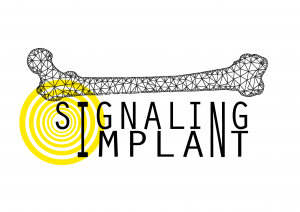PROJECT
The growing demand for functionality of implants is necessary to cater for the growing elderly population in need of repair for damaged or diseased tissues and organs. Bioactive materials provide the best source for satisfying this need, as attention is returned to the material from the atomic level all the way up to the macroscopic level. This is a new approach, since previously artificial implants primarily only focus on the implant chemistry, with little attention to the surface. The objective is to design implants for chemistry, topography and electrical potential. In terms of function, the implant will have an extended capability: It will stimulate bone growth, and provide active sites for bone attachment. It is expected that fast bone bonding will occur and the level of attachment will be stronger.
The body routinely relies on electrical signals in the brain, heart and muscles, but the integration of electrical signals in orthopaedic implants is missing. To provide this signal, the placement and orientation of chemical groups in a repeatable order throughout the material is key to establishing a surface electrical potential.
Benefits will be given across the board from contributions to biomaterials science, a new quality control procedure, a coating process specifically designed to impart a surface potential, and a new implant from the European marketplace to cater for the growing need of bone repair. The collaboration will establish a new strategy by continually reassessing the extent of improvement at the material level, through to the biological testing level.
The proposed consortium offers experts on materials, processes, materials testing, bone mineralization, antimicrobial testing from both research and industry settings.
Objectives of the project
This project aims to design and produce a multifunctional implant and a new electrical field meter. The multifunctional implant is planned with signals to:
a) stimulate bone growth towards the implant, and
b) anchor bone cells on a bioactive surface for improved bone attachment.
The main objective is improved health in society with the provision of new materials that benefit from added functionality arising from crystal lattice engineering.
Work packages
WP1. Management and dissemination
WP2. Design and production of a charged apatite film and coating
WP3. Electric potential mapping and streaming potential measurement
WP4. Biocompatibility, osteogenesis and antibacterial testing
WP5. Animal testing

